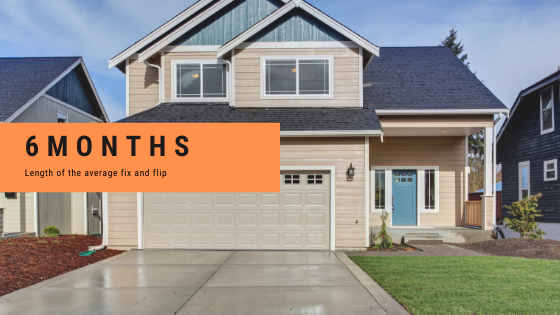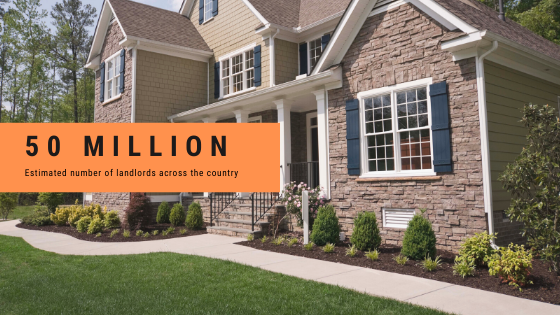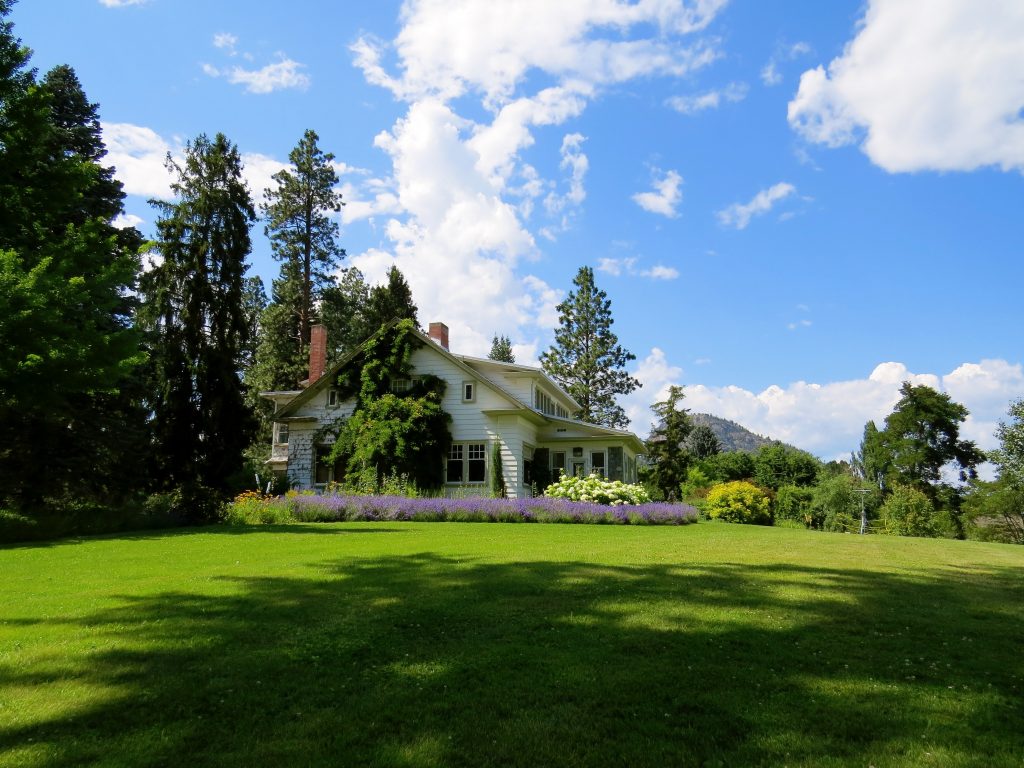Are you interested in making real estate investments successfully? When choosing the best option for investing, it often comes down to fix and flip versus holding onto the property and renting it out. Both strategies have their own distinct advantages and disadvantages, which can make the decision even more difficult for the investor. There are so many variables to consider, that it can be hard to know where to start. As both strategies have viable income-earning potential, how do you ultimately decide which one is best for you to pursue?
In this article, we’re breaking down the key differences between these investment strategies, from start to finish, to help you narrow down your choice of real estate investment. These are the definitive pros and cons of flipping a property versus buying a rental home and becoming a landlord, including how to know which strategy is best for you:
Flipping VS Renting: Key Differences
The basic difference between flipping a property and renting one out is the length of the overall investment and the fact that there may not be a rehab needed on a rental investment. Fix and flip investments tend to be short-term projects, lasting only for as long as it takes to renovate and resell the property – usually, flips last around six months on average before they are completed and sold.
On the other hand, becoming a landlord is often a longer-term project, where the investor holds the property over several years to collect a monthly income and have the property appreciate in value year-by-year.

Flipping a property is also an active process, which requires a lot of oversight and management from the investor, while rentals are considered to be more passive and can be successfully managed by third parties. For fix and flip investors, their income is limited to how many flips they successfully conclude and sell. They are unlikely to make any money from the deal until final closing when they receive a one-time, more substantial payment, but still have to manage the costs of the property every month.
Conversely, the income which is earned from a rental property is ongoing, with only set increases in rental income (usually around 10%) per year. The income can be earned from a rental until the property has no tenants or the investor decides to sell it.
Advantages of Flipping Properties
Fix and flip investments hold a lot of advantages for the investor, especially as there is the potential to make a lot of profit in a relatively quick time frame.
The majority of flips take place in a period of less than a year, which is important because the faster the flip is completed, the higher the profits will be for the investor. The once-off purchase and sale of this type of investment suits some investors better as they don’t want to manage properties or deal with tenants long-term. They’d rather get their profit and hand over the property to someone else.
Purchasing a property of this nature grants the investor instant equity also sometimes referred to as “forced appreciation”. Another significant benefit is that getting approval for a fix and flip loan is a much faster and easier process compared to traditional loans. Once a borrower has submitted the necessary documents, they can get funding from a hard money lender within only a few days.
These lenders will also grant funds for properties that are in various conditions. Foreclosed, older or dilapidated homes can be more affordable on the spectrum of properties, but investors wanting to purchase them are unlikely to get funded by conventional lenders like banks due to the risk involved.
Advantages of Renting Properties
Data shows that there are nearly 50 million landlords throughout the US, indicating how popular owning a rental home is as an investment.

Rental property ownership holds several advantages to investors: benefits like higher cash flow, specific tax benefits, and appreciation of home value are the top three. Rental ownership is categorized as passive income, as these are longer-term investments where landlords grow their rental income to such an extent that it can cover their monthly expenses.
Residential rental properties are the most common, but short-term holiday rentals like Airbnbs and bigger long-term projects like commercial real estate are valuable alternatives that are taking off in popularity with investors. Airbnb rentals are particularly popular, with the company already boasting over 2 million people staying in one per night.
The ownership of a rental property presents the investor with some unique tax advantages that fix and flip investors don’t necessarily get in their path of investment. Certain tax deductions for these properties can include the sums of money originally used for the operation and maintenance of the property, the property interest, and other expenses like materials needed.
If selected carefully in an area that is developing and performs well historically, a property held over the long-term will increase in value significantly while the investor holds it. Generally, property as a physical structure will deteriorate in condition, but the land value of the home also takes the value of the land itself and any improvements made to it in regard.
Lastly, rental properties hold some measure of protection from the down cycle of the real estate market. Even in times of less ideal market performance, people will always be in need of rental homes, and the continual cash flow that comes in is highly beneficial to the investor.
Drawbacks of Flipping Properties
For fix and flip properties, the first and most notable drawback is that investors will pay more tax than they would for a rental property. Income which is made from fix and flip properties is taxed as ordinary income, which is typically a higher rate than rental investors have to deal with. Tax brackets for this type of investment can range from 10% to almost 40%, depending on the amount of income made by an “active investor”.

Similarly important is that this type of real estate investment is highly dependent on the performance of the local real estate market, so any economic downturns in the area can really affect the investor’s ROI.
Another drawback of doing a flip is that the investor has to have experience rehabbing property, or have a trusted general contractor that can do that job and keep the flip on budget and on schedule. A good contractor is the most essential part of the flipping process and directly impacts how profitable the project will be at the point of sale. Without the necessary experience it takes to rehab a home properly, an investor will find themselves overwhelmed very quickly. What’s more, their inexperience could even cost them money throughout the flip process.
Drawbacks of Renting Properties
On the other hand, there are also drawbacks to owning a rental property. For the rental property investor, tenants will need managing, the property will need regular maintenance and non-payment of rent can become a costly issue taking months to sort out. Investors can make use of a property manager to handle tenants, but paying for this service is another expense to cover. There are times in which rental vacancies can become extended if local economic conditions were to undergo a serious downturn.
Which Strategy is Best?
With all of the above in mind, it’s finally time to sit down and choose a strategy. Both of these strategies are effective wealth-builders and hold good potential to earn profits for the investor. Deciding which is best will really come down to the investor’s personal financial goals, and how much time they are willing to spend on the investment.
If the investor is looking to earn a lump sum of money quickly, and has the experience or contractor to make it work, taking on a fix and flip property is the better choice. However, if the investor would prefer to earn a steady and long-term income and isn’t experienced at rehabbing, buying a turnkey rental home would be the more ideal solution.
It also comes down to how much time and effort the investor can realistically dedicate to their real estate project. Both strategies require investor oversight to some extent, but rental properties require less management if a property manager is enlisted to oversee them.
There is also no reason why you cannot follow both strategies. Many investors make use of one strategy to kickstart the development of another by flipping a few properties to cover the future expense of buying a rental property. By making use of both strategies, the investor can build a more diverse real estate portfolio, and always have some assurance in the form of rental income between flips.
At the end of the day, it’s up to the investor to weigh the advantages and disadvantages of both and select the option best aligns with their financial goals and timing.
As an investor, you always want to be looking at what the best angle is for getting the profits you want while keeping a keen eye on the local real estate market’s performance. Fix and flip investments and rental property investments are commonly compared by investors who are looking for the avenue that earns the most income, in the timeframe they want. Each strategy holds its own decided advantages and disadvantages for the investor, and their personal goals will dictate which is best for them to ultimately pursue.
There is no blanket solution as to which one is best – when it really comes down to the wire, fix and flips have shorter-terms than rental properties, are easier to get loans for and profits are paid in a single lump sum at the end of the transaction. Alternatively, rental properties are all about earning steady, reliable monthly income over the long-term, commonly with no renovation needed before tenants can move in. Fix and flips, in the long run, need more direct involvement and oversight from the investor, while rental properties are usually turnkey and need minimal to no changes before renting it out.
Many investors come to the decision to pursue both strategies to some degree, to diversify their real estate portfolios and use one to finance the development of another.
Tips To Remember
If the investor is looking to earn a lump sum of money quickly, and has the experience or contractor to make it work, taking on a fix and flip property is the better choice.
If the investor would prefer to earn a steady and long-term income and isn’t experienced at rehabbing, buying a turnkey rental home is probably the better solution.

